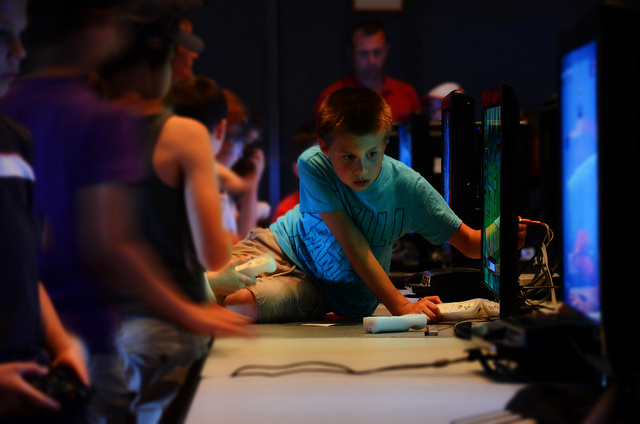The arguments for and against video games can get very heated.
Those who see video games as harmful point out increasing rates of obesity, difficulty in one-to-one communication skills, and addiction to screens. These are legitimate concerns, and there is still much that we do not know about the long-term effects of excessive amounts of screen time. But video games provide an opportunity for one of the best methods of learning: play. Part of what makes digital play so powerful is children’s immersion and attention in their play, what our team at LearningWorks for Kids calls “engamement.” Here is our take on whether video games are harmful or helpful to kids.
Risk and Reward
The potential of video games for learning and growth comes from their construction and capacity to individualize to players. They are designed to match challenge to mastery level; provide immediate feedback; present material in a multi-modal, engaging fashion; and teach through guided discovery. These are great teaching strategies for all students but particularly for children with learning and attention problems. Our research at LearningWorks for Kids shows how these alternative learners can improve thinking and processing skills while playing an individually- prescribed set of video games.
Sharpening Skills
There is overwhelming evidence that video games can improve skills such as selective attention, processing speed, working memory, and spatial relationships. Games are being used successfully to teach academic content in science and history, encourage repeated practice of reading and math skills that have traditionally been difficult to achieve, and develop hypothesis-testing skills and the ability to think in new ways. There is also accumulating evidence that video games practice skills such as executive functioning, problem solving, decision making, cognitive flexibility, and leadership. We need to learn more about how to transfer these game-based skills to real-world activities, but the potential for using the “engamement” of a focused video-game player to learn critical thinking skills is promising.
Focus on the Future
Facility with video games and other digital media is a crucial part of our children’s future and can lead to educational and vocational success. These skills do not apply simply to the use of technology but perhaps more importantly to skills such as collaboration, creativity, and communication, which have become core skills of video gamers in today’s socially-digital world. While champions of video games such as Jane McGonigal (SuperBetter) and James Paul Gee may sometimes overstate what children can learn from video games, it is clear that we have just begun to access the potential of these games for learning.
The Play Diet
Video games are a major component of the “digital play” that makes up as much as nine hours a day of children’s activities. Yes, 9 hours is a lot. There is legitimate reason for concern about the amount and types of video games some children play. Our take is that a healthy “play diet” consists of far more than digital play. Too much of any type of play, even social, physical, or creative play, is not conducive to a child’s physical, emotional, and cognitive development. Appropriate balance and limits should be set based upon a child’s developmental levels and interests. Digital play is best used as part of a “whole play” diet in which it is mixed with other forms of play to make for more powerful learning experiences. Many of the best video games involve other players, creating a social experience; exercise, resulting in a combination of physical and digital play; and the opportunity to innovate through creative digital play using age-appropriate tools.
Read more about “engamement,” gamification, learning from video games, and imposing a Play Diet in your household. If you’re concerned about screen time, you can read about limit-setting and how to make the most of your child’s video game play. Yes, that means playing with them (we’ll help you)! Check out our Playbooks to find a game you’d like to play with your child and learn how to play and talk about it with them.
Featured image: Flickr user Laurent DUSSIMON




